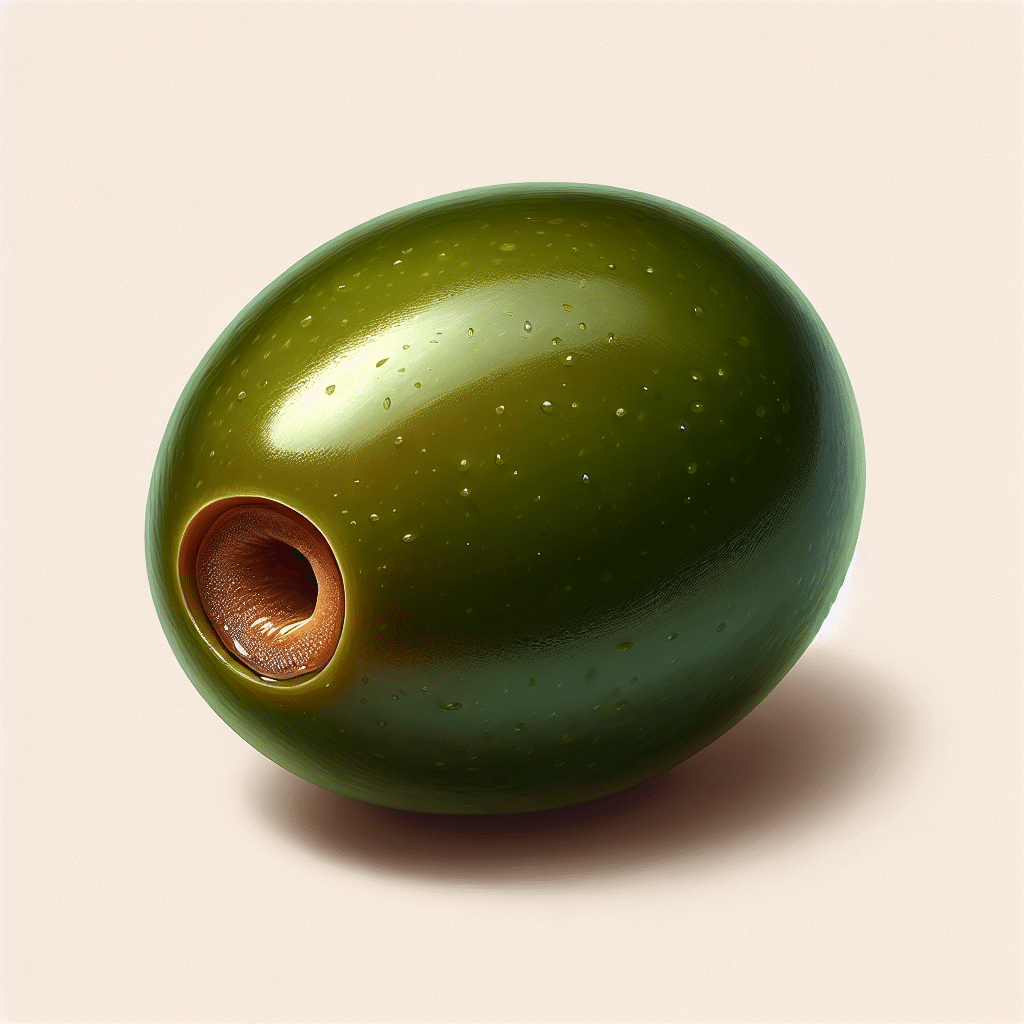Introduction
An olive is a small, oval fruit produced by the olive tree (Olea europaea), native to the Mediterranean region. Renowned for its rich flavor and versatile culinary uses, olives are categorized into two main types—green and black—determined by their maturity and processing methods. Green olives are harvested before ripening, while black olives are ripe and often cured to enhance their taste. Olives are celebrated not just for their unique flavor profile but also for their health benefits, as they are rich in healthy fats, antioxidants, and vitamins. Commonly consumed as whole fruits, oils, or paste, olives play an integral role in various cuisines, particularly in Mediterranean dishes.
1. Understanding Olives: A Comprehensive Overview
Olives belong to the family Oleaceae and are primarily cultivated in subtropical climates, making them especially prevalent in countries bordering the Mediterranean Sea. Known for their nutritional value, olives have been a staple in human diets for thousands of years. The cultivation and processing of olives are not only significant for culinary uses but also hold cultural and historical importance.
1.1 The Olive Tree: An Icon of Longevity
The olive tree, characterized by its gnarled trunk and silver-green foliage, is a hardy species that thrives in poor, rocky soils. The tree can live for hundreds of years, with some specimens recorded to be over a thousand years old. This resilience reflects the tree’s ability to adapt to challenging environmental conditions, further solidifying its status as a symbol of peace and endurance.
1.2 Varieties of Olives
There are over a thousand olive varieties cultivated worldwide, each with its unique flavor, appearance, and oil content. Some popular varieties include:
- Manzanilla: A small, green Spanish olive, known for its nutty flavor.
- Kalamata: Dark purple, almond-shaped olives with a robust, fruity taste.
- Castelvetrano: A sweet, green Sicilian olive, prized for its tender texture.
- Gaeta: Small Italian black olives, slightly wrinkled and mild in flavor.
2. Nutritional Benefits of Olives
Olives are not only delicious but also nutritionally beneficial. They are rich in monounsaturated fats, particularly oleic acid, which is associated with numerous health benefits, including heart health. In addition, olives provide essential antioxidants such as vitamin E, which helps combat oxidative stress in the body. They are also low in carbohydrates, making them a suitable option for various dietary preferences, including low-carb and Mediterranean diets.
2.1 Health Benefits
Some key health benefits of olives include:
- Heart Health: The healthy fats in olives may reduce the risk of cardiovascular diseases.
- Anti-Inflammatory Properties: Antioxidants present in olives can help lower inflammation markers.
- Weight Management: Olives can aid in weight control due to their satiating nature.
- Bone Health: Some studies suggest olives may contribute to improved bone density.
3. Culinary Uses of Olives
Olives are a versatile ingredient found in a wide array of dishes and products. Here are some significant culinary applications:
3.1 Olives as Table Olives
Table olives are preserved through curing processes that can involve brining, dry curing, or lye curing to enhance flavor and reduce bitterness. These olives are often enjoyed as appetizers, added to salads, or used as toppings on pizzas.
3.2 Olive Oil
Olive oil, extracted from the fruits, is widely regarded as one of the healthiest cooking oils available. Its culinary applications range from salad dressings to sautéing and baking. Extra virgin olive oil, which is the highest grade of olive oil, is particularly valued for its flavor and health benefits.
3.3 Olive Paste and Tapenade
Olive pastes, such as tapenade, are popular spreads typically made by blending olives with capers, anchovies, and olive oil. Tapenade serves as a flavorful addition to bread, crackers, or meats and enhances the depth of Mediterranean dishes.
4. Olive Production and Processing
The journey from olive tree to table involves several steps, including harvesting, curing, and bottling. The harvest typically occurs in the fall when the olives reach the desired maturity levels. Processing methods vary based on the type of olive and desired flavor, influencing the product’s final taste and texture.
4.1 Harvesting
Fruits are usually hand-picked or shaken from the trees. This manual technique, while labor-intensive, helps maintain the quality of the olives. Harvest timing is crucial, as it impacts the fruit’s oil content and flavor profile.
4.2 Curing Methods
To remove the natural bitterness of olives, curing techniques are employed. The most common methods include:
- Brining: Soaking in a saltwater solution, which enhances flavor while preserving the olives.
- Lye Curing: Using sodium hydroxide to speed up the curing process, typically followed by rinsing extensively.
- Dry Curing: Coating olives in salt, drawing out moisture and resulting in a wrinkled texture.
5. Cultural Significance of Olives
Olives hold a prestigious place in the culinary traditions of nations across the Mediterranean, symbolizing peace, prosperity, and health. Their historical significance dates back to ancient times, and they are often featured in religious texts and art. Olives are celebrated in various cultural rituals, signifying unity and fertility.
6. Frequently Asked Questions (FAQs)
6.1 Are olives fruits or vegetables?
Olives are technically considered fruits because they are the fruit of the olive tree. They are classified as a drupe (stone fruit), similar to cherries and peaches.
6.2 What is the difference between green and black olives?
The primary difference lies in their ripeness. Green olives are harvested before fully ripening, whereas black olives are fully mature. Their curing processes also vary, affecting flavor and texture.
6.3 How are olives harvested?
Olives can be hand-picked or harvested using mechanical shakers that vibrate the trees, causing the olives to fall into nets placed underneath.
6.4 Can olives be eaten straight from the tree?
Raw olives are very bitter and generally not palatable. They undergo curing processes to eliminate bitterness, making them suitable for consumption.
6.5 How should olives be stored?
Stored in a cool, dark place, olives should remain submerged in brine or oil to retain moisture and flavor. Once opened, they should be refrigerated to extend freshness.
Conclusion
Embodying historical, cultural, and nutritional significance, olives are a remarkable fruit that enhances meals across various cuisines. Their diverse varieties and versatile uses—from table olives to olive oil—make them an enduring staple in our diets. As you appreciate the rich flavors and health benefits olives offer, remember their important role in culinary heritage and sustainable agriculture.



